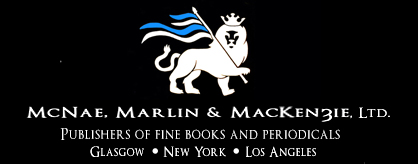Designing Book Covers to be Seen on Small Devices
by Andy Candelaria
Creative Director
 Without a doubt the cover of your book is the single most influential marketing tool you have to make a sale. Traditionally book covers were designed with the thought of shelf space and point of purchase. But the reality is that unless your book is published by one of the NY giants such as Harper Collins, Penguin, Random House, Simon and Schuster, etc. your book may not have front table space or even promised shelf space in your local Barnes and Noble. The truth is that there are close to a million and a half books published every year and for every book space on a book seller’s shelf there are up to 1,000 other titles competing for the same space. And yet, books are selling. How? Because the Internet has created a level playing field in terms of sales of products and services. Even more specifically, online sellers such as Amazon offer every author the same, equal opportunity to have their books promoted and sold and become a bestseller. But because the Internet is a visual medium, and because of the limited space and time in which an author has to have their book product seen, the cover design has become even more important than ever as a sales tool. The average person searching through Amazon and scrolling a page of books in their search results will spend less than 5 seconds on the graphic image of your cover as they scroll the page. So within 5 seconds your cover will have to jump out and grab their attention. The point is that from the perspective of advertising and promotion, optimal book cover design has changed from a full size book of 6 inches by 9 inches that sits on a shelf, to the area of about 1.2 inches by 1.8 inches on a computer monitor screen. At M3 Publishers we have a former Amazon designer who assists in cover design with Internet marketing in mind.
Without a doubt the cover of your book is the single most influential marketing tool you have to make a sale. Traditionally book covers were designed with the thought of shelf space and point of purchase. But the reality is that unless your book is published by one of the NY giants such as Harper Collins, Penguin, Random House, Simon and Schuster, etc. your book may not have front table space or even promised shelf space in your local Barnes and Noble. The truth is that there are close to a million and a half books published every year and for every book space on a book seller’s shelf there are up to 1,000 other titles competing for the same space. And yet, books are selling. How? Because the Internet has created a level playing field in terms of sales of products and services. Even more specifically, online sellers such as Amazon offer every author the same, equal opportunity to have their books promoted and sold and become a bestseller. But because the Internet is a visual medium, and because of the limited space and time in which an author has to have their book product seen, the cover design has become even more important than ever as a sales tool. The average person searching through Amazon and scrolling a page of books in their search results will spend less than 5 seconds on the graphic image of your cover as they scroll the page. So within 5 seconds your cover will have to jump out and grab their attention. The point is that from the perspective of advertising and promotion, optimal book cover design has changed from a full size book of 6 inches by 9 inches that sits on a shelf, to the area of about 1.2 inches by 1.8 inches on a computer monitor screen. At M3 Publishers we have a former Amazon designer who assists in cover design with Internet marketing in mind.
Back in the day when direct mail came to everybody’s door, the book and record clubs would send packages with sheets of small stamps printed with miniature record and book covers. The idea was for the customer to tear off the stamps of the books or records they wanted and place them on a return postcard. Invariably the records and books which were selected the most were the ones with artwork that was compelling when reduced to the size of the stamp and most attractive to the eye at that small size.
Buying books, records (CD’s) and now movies is really no different except now most buying is online on a computer monitor instead of those small stamps. The art and covers that look best when reduced in size are the ones which grab the prospective customers quickly.
There are no hard and fast rules about this, but here are a few tips, which in general should help when designing a cover for a book, knowing that the art will appear in a much smaller format when see on Amazon or barnesandnoble.com, and especially now that customers are using handheld devices more for purchases.
- Learn from the greatest small space artists in the world, The best artists for small space messages and graphics are postage stamp designers. That’s right.The first thing you should try is do a Yahoo or Google image search fro the most beautiful postage stamps in the world. Look at the composition and the colors. Take note of the fonts used. In a very small space there is a message. What is the message and the emotional feeling that you get when you look at the stamp? Now go through your own book and see if you can identify the message that you want to grab the reader. How would you put this together in a small space?
- Unless you are relying on a strong title such as “How To Get Rich Before You Leave This Webpage”, your color scheme is very important. Certain colors have been found to cause viewers to pay more attention and to influence them emotionally more. In fact Research from QuickSprout indicates that 90% of all product assessments have to do with color. “Color,” writes Neil Patel, is “85% of the reason you purchased a specific product.” Think about your potential audience of your book and choose your colors accordingly.
Women respond well to colors like blue, purple and green. They don’t respond well to gray orange and brown.
Men on the other hand like blue, green and black. They don’t respond well to purple, orang or brown.
Blue as a color tends to send a message of established trust and reliability. The best example is right in front of you on Facebook. Look at the strong Blue and white color scheme. Blue is also a color used largely by banks, financial institutions and airlines in their advertising. Yellow is used most often for warning and adventure, trying new things. Green is the color of all things nature and is great for eco-friendly subjects. Green also is traditionally associated with money. Orange is an active color which is used for youthful projects like children’s books and books about sports and entertainment. Black is elegance, sophistication, power, and luxury, and white can be used for a sense of space and freedom. If you are designing your own cover, take some time to familiarize yourself with some basic color theory so that you can create harmonious color schemes that can quickly communicate the emotion of your book. - Choose fonts that are easy to read when reduced in size. Luckily when your small book cover appears online it is usually next to a larger text block describing the book, so legibility of the title may not be as important on the cover art itself. But you never know. My rule of thumb is to make sure your title is clearly legible at small sizes as well. If you are dealing with a title which must be read in a small space it is generally best to avoid ornate or serif fonts. The three best fonts to use for readability in small space environments and still be legible are Verdana, Arial and Tahoma. And make sure that the color of your font makes your title stand out against the back ground colors of your cover art.
If you are not sure if you are creating an effective cover for your book, contact M3 Publishers and we’ll help you create a stunning, eye-catching work of art for your book.

